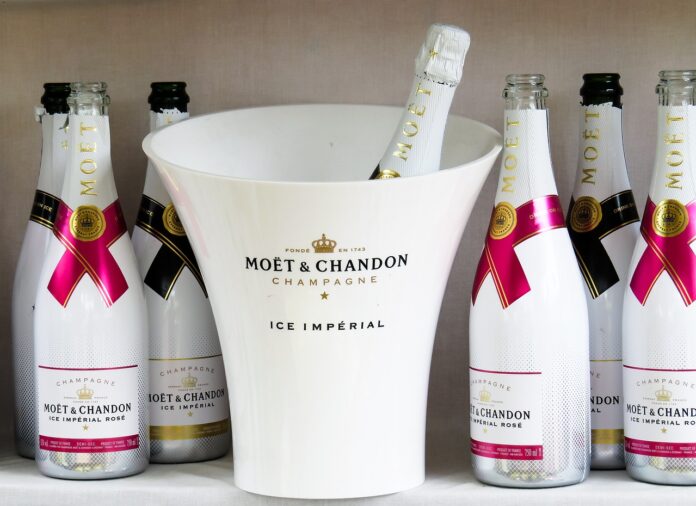Champagne is a sparkling wine that comes specifically from the Champagne region of France. It’s produced through a specific process called the traditional method, or méthode champenoise, which involves secondary fermentation in the bottle to create carbonation.
Interesting Facts About Champagne:
- Before champagne became the drink of aristocrats, wine from Champagne was called “the devil’s wine.” This was because it had a tendency to undergo secondary fermentation, which could cause barrels to explode at the most inconvenient times. Later, this process was learned to be controlled.
- Each bottle of champagne contains enough carbon dioxide to create several tens of millions of bubbles. To be precise, each bottle of champagne contains about 250 million carbon dioxide bubbles. Good champagne retains its bubbles for a very long time. For example, it is believed that 10-20 hours is the normal time for a glass of good champagne to remain fizzy.
- The pressure in a bottle of champagne equals 5-6 atmospheres. This is almost three times higher than the pressure in a car tire. It is also known that the larger the bottle, the higher the pressure inside.
- The quality of champagne worldwide is controlled by the Interprofessional Committee of Champagne Wine. It includes everyone involved in the production process: more than 15,000 grape growers and cooperatives, and over 300 different enterprises.
- The largest champagne glass in the world was filled on August 6, 2011, by Crimean winemakers. The height of the glass was one and a half meters, and it held champagne from 75 bottles. The huge glass is an exact replica of a standard champagne glass on a larger scale, as this is a mandatory condition for record registration.
- In the nineteenth century, foil first appeared on the neck of champagne bottles. Historians believe that the foil had a very practical purpose, namely to help combat rats, which were very common in cellars at the time: the foil deterred them.
- Champagne is the most ritualistic drink in the world. It’s hard to imagine a drink that would look more appropriate at weddings, during the chimes of New Year’s Eve, or during anniversary celebrations. Champagne is also used in occasions of special ceremonial significance: during the presentation of football cups, in the ceremony of awarding Formula 1 winners, during ship launchings, and so on. In these instances, it is not just a drink but a symbol of victory and celebration.

- Champagne has an official method of production. Only sparkling wine produced in the Champagne region of France using the méthode champenoise (traditional method) can legally be called champagne. This process involves a secondary fermentation in the bottle, which is responsible for the bubbles.
- Champagne bottles have a distinctive shape and design. They are thicker and heavier than regular wine bottles to withstand the high pressure of the carbon dioxide. The bottles also have a deep punt (indentation) at the bottom to provide additional strength.
- The term “Brut” indicates the dryness of champagne. “Brut” is the most popular style of champagne and indicates that the wine is very dry, with less than 12 grams of sugar per liter. Other styles include “Extra Brut” (even drier) and “Demi-Sec” (slightly sweet).
- Dom Pérignon is often mistakenly credited with inventing champagne. While Dom Pérignon, a Benedictine monk, made significant contributions to the development of champagne, the sparkling wine was being produced in the region before his involvement. However, he did improve the process and helped popularize it.
- Champagne corks are shaped differently from regular wine corks. Champagne corks start as straight cylinders, and the pressure inside the bottle causes them to expand into their distinctive mushroom shape after they are inserted into the bottle.
